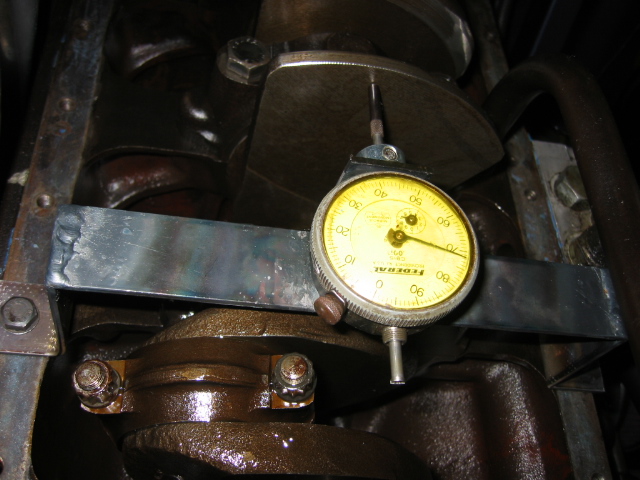Something I didn’t spot at the time is one head stud is a dowel bolt .
I will get it all off to be measured and assessed and report back.
Too late now, but I would have suggested that you put orientation punch marks on the oil pump/distributor drive gear and the bushing it runs in before you removed them. Makes it much easier to get the distributor drive back in the correct location.
Jim, to measure crank endfloat, set up a dial gauge on a magnetic base to read the nose of the crank. Use a couple of hefty screwdrivers or pry bars to lever a crank throw back and forth against a block web. Read off the dial gauge. Much more accurate than feeler gauges in the thrust bearings.
Either method, done correctly, give perfectly serviceable measurements.
Wiggles Paul Wigton Regular
February 7
Either method, done correctly, give perfectly serviceable measurements.
True, But some of us have been doing it with an indicator for many years and prefer that to feeler gauges. I’ve been using this setup for longer then I care to admit , and it was, the fixture, “scabbed” together from scrap laying around the shop at zero cost and maybe 30 minutes time.

Either is fine: the only time I used a dial indicator was on engines, like Porsche and VW, where the feeler gauge method doesnt work.
My central point remains: either, done properly, will give perfectly serviceable results.
I’d agree - perfectly serviceable, but as a purely personal opinion I’d prefer to have the greater accuracy given by the dial micrometer. The same goes for accurate TDC marking on the damper (measured with head off), and checking cam timing from first principles. I don’t trust the timing marks/grind until I’ve checked them!